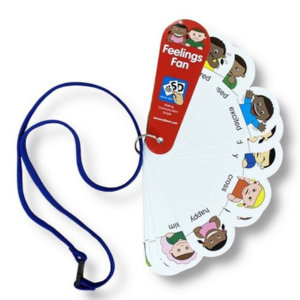Get exclusive deals you won't find anywhere else straight to your inbox.

Why Won't My Child Settle At Night?
We are often asked the question 'why won't my child settle at night?" It's one of the most popular calls we take in the office, and we felt it an important topic to tackle in this months blog. Whilst we have no medical experience , we do have an abundance of experience in raising our own children with sensory needs and helping and speaking to hundreds of parents and carers over the past 16 years.
So, here are some of our thoughts and some possible reasons as to why your child won't settle at night. We'll suggest some practical strategies that worked for us and others and may work for you and your child too. These strategies and tips may not work for everyone, but we hope that some will hopefully lead to a more peaceful nights sleep for the whole family.
Routine & Structure
Autistic children often thrive on routine and predictability. An established routine helps to reduce anxiety associated with 'what's happening next', and help break the day down into digestable chunks.
Any changes in routine, such as disruptions to bedtime or changes in the sleep environment, can be particularly challenging and lead to an unsettled child. To prevent this from happening, try to establish a consistent bedtime routine that can help signal to your child that it's time to wind down and prepare for sleep.
As well as a daytime routine, we always found it useful to produce a separate visual timetable for bedtime. Through the use of symbols, we could clearly display what the bedtime routine involved, and helped our son manage his expectations. It also meant that even if the daytime routine changed (some changes are inevitable), the bedtime routine remained constant. We incorporated timers for set activities such as brushing teeth and story time, so each step of the process was carefully considered and there were limited surprises. We found sticking to this routine as best we could provided familiarity and comfort.
Anxiety or Overstimulation
Anxiety and overstimulation can interfere with a child's ability to settle at night.
Try to limit screen time and stimulating activities in the hours leading up to bedtime. Using your visual timetable, show that the hour before bed is 'quiet time' or 'calming down time'. If you use a sensory den, perhaps you could sit inside and read a book or explore some sensory lights. We find bubble tubes a particularly effective tool for calming down. Most importantly, construct this time around activities your child responds well too.
Sensory Sensitivities
What is sensory sensitivity?
Many autistic children and adults have sensory sensitivities or differences. The National Autistic Society explain this as;
"If you are autistic, you may be over-sensitive or under-sensitive to specific sights, sounds, smells or textures. This can be a positive thing, but can also cause distress or discomfort"
If your child experiences sensory sensitivities, this can make it challenging for them to relax at night. One of the first steps in ensuring a more comfortable sleep is to make sure their bedroom meets their sensory needs. To do this, consider your child's sensory likes and dislikes and use this to create a soothing environment. Please don't worry, we don't mean you need to create a £1,000 multi-sensory space (unless you want to that is!), but there are some simple steps you can take to create the perfect sleep enducing space.
How to create a soothing bedtime environment
If your child responds well to visual stimulation such as lights, why not try some soothing sensory lights or sensory mood lights in their bedroom. Sensory lights don't need to cost an arm and a leg, and with 1 or 2 carefully considered lights, you can create a calming, relaxing environment.
We used a starlight night projector at bedtime - the starry sky projected on the ceiling helped transform the bedroom into a calming space. For the same effect but with a variety of colours, we also love kaleidoscope lamps. If your child prefers a dark room with no sensory lights, investing in a blackout blind or curtains can go a long way!
Sound was an important feature of our night time routine. We would leave a Thomas the Tank Engine story playing quietly (the same one every singly night!) until our son fell asleep. If your child responds well to sounds, perhaps you could play an audio book, listen to some quiet, soothing music or play white noise.
Smells can be a bit hit and miss - from our experience we find children either love or hate anything scented at bedtime. If your child responds well to smells then try one of these weighted animals. Pop them in a microwave to release a soothing lavender scent, perfect for warm cuddles in bed. They also weigh 800g, providing calming, weighted therapy (we'll come onto this in a bit!)
Lastly, it's important to consider texture. Make sure bedtime clothing is comfortable and in a material your child finds pleasing. Incorporate tactile cuddly toys or weighted blankets in soft, textured materials that your child can snuggle up to and relax.
Weighted Blankets
Without a doubt, the single, most-effective resource we used was a Weighted Blanket. In fact, it changed our lives. The first night our son had his weighted blanket he settled quicker than usual and only woke up once. The next night he slept right through for the first time in 5 years – the effect for the family was truly miraculous.
One major reason people (and us!) use weighted blankets is for their ability to calm and relax the body. One very common reason for being unsettled at night-time is restlessness. If the body is over-stimulated or over-tired it can become difficult to settle for sleep. This is where weighted blankets can help.
Used safely at night time across the body, the soothing weight helps you to calm and relax, getting you into the correct state for sleep. People also say that the sensation of weight across the body emulates that of a gentle hug. This can be particularly reassuring for children, providing them with a sense of security.
Weighted Blankets come in a variety of different weights, sizes and fabric choices. We prepared a guide on 'what is a weighted blanket and how to pick one', which we hope you find a useful starting point.
Communication Challenges
Some autistic children may struggle to communicate their needs or express when they are feeling uncomfortable or anxious. Encourage open communication and provide opportunities for your child to express their feelings in ways that work best for them, whether through speech, sign language, pictures, or other communication tools. Communication fans are a great, cost-effective way to help children and adults express feelings and emotions. We stock a range of fans including 'feelings', 'sensory' and 'behaviour' which can be used at home or out and about.







